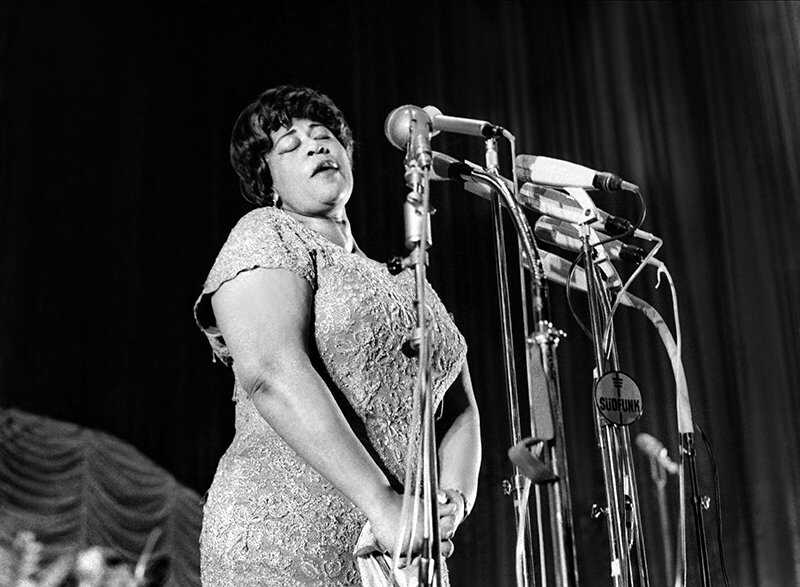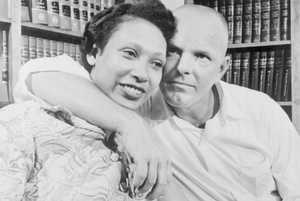The Casual Excellence of Ella Fitzgerald
The “First Lady of Jazz” expanded the parameters of Black women’s art.
By Emily J. Lordi

One hundred and one years after her birth and two decades after her death, Ella Fitzgerald’s voice still sounds like your best day, your most clever retort, your most glamorous party. By age twenty she had turned that voice into an instrument of outstanding facility and inventiveness; brassy, husky, and pearly by turns, there was nowhere it couldn’t go, nothing it couldn’t do. In that way, her sound itself defied the restrictions of the Jim Crow era into which she was born, and the personal and social blocks that dogged her thereafter. In the end, the “First Lady of Jazz” seems to have outwitted them all — stylishly and profoundly expanding the parameters of Black women’s art.
On tunes like “The Lady is a Tramp” and “I Won’t Dance,” her persona was that of a romantic comedy heroine — a role that, as critic Margo Jefferson notes, Black women seldom played. Neither brooding like Billie Holiday nor formidable like Sarah Vaughan, Fitzgerald was more like the straight-A student who avoids arousing envy by being the nicest person in the class. But her sunny disposition itself brought accusations that she lacked depth. As clarinetist Tony Scott quipped, “When Billie Holiday sings ‘my man’s gone,’ you believe that man is never coming back; when Ella sings it, you assume he’s just gone around the corner to pick up a loaf of bread.”
There is some truth to that. Although Fitzgerald could at times sing with devastating emotional precision — for instance, in her 1968 performance of “Summertime” in Berlin — the sheer buoyancy of her musical gifts could sometimes distract from the lyrics. She baldly privileged sound over meaning when, in the late 1930s, she started to scat — an ostensibly simple but technically demanding practice through which she ensured that jazz singing kept pace with the advances of bop artists like Dizzy Gillespie. Her scatting defied the notion that pop performance should reflect a singer’s life — that what made Billie Holiday so convincing a singer was that her personal anguish sounded through her voice. According to this logic, the more pained the tone, the more authentic.
Fitzgerald, like Holiday, had more than her share of heartache. Born in Virginia in 1917, she lost her mother to a car accident at age fifteen and was left with a stepfather who abused her. A well-meaning aunt brought her to New York but couldn’t keep her in school; before long, Fitzgerald was sent to a girls’ reformatory. She escaped, first onto the streets, where she sang and danced for money, and then onto the stages of the Apollo Theater and the Harlem Opera House. Her vocal skills, once a source of girlhood pleasure, now became a means of survival as she worked the amateur talent show circuit. She won most contests she entered, but still had to convince bandleader Chick Webb that a penniless brown-skinned woman should front his ensemble — a band that she later directed, after Webb’s death in 1939. She was unlucky in love, did not have children, and rarely spoke about her past. Her vocal art did not express her painful life so much as it conveyed her love of — and exquisite care for — the music that helped her escape it.
She retained the values of the big band era in which she grew up, where the song itself was the story. So her best-known recordings are not torch songs but elliptical narratives (“Bewitched, Bothered and Bewildered,” “Nature Boy”); complex persona songs (“Love for Sale”); and tunes that celebrate musical experimentation itself (“A-Tisket, A-Tasket,” “It Don’t Mean a Thing If it Ain’t Got that Swing”). Like all her mid-century “songbook” ballads and show tunes, these recordings plumb the sensual and expressive possibilities of song. Playing with time and caressing the melody while using the lilt in her voice to make certain words gleam, Fitzgerald issued love letters through as well as to the music.
By challenging conventional links between Black women’s lives and their art, Fitzgerald made space for imagination, virtuosity, and play — for a performance tradition that was as much about one’s feeling for music as it was about one’s feeling for anything else. We hear her impact in Aretha Franklin’s playful breakdown of a lyric that, as Franklin explained, she figured she should spell out: “R-E-S-P-E-C-T.” She’s there when Sly and the Family Stone’s Rose Stone euphemistically declares, in “Hot Fun in the Summertime,” “I boo boo ba boo boo when I want to!” She even prefigures pop rebel Rihanna — who, in a breakout single that would have made sense in Fitzgerald’s songbook, invited her lover to stand under her “um-ber-ella, ella, ella, eh, eh, eh…” That song, despite the sweetness of its message, is less about Rihanna’s willingness to shelter someone than it is about the soon-to-be-ubiquitous sound of her own voice, somewhat flat and vaguely accented as she breaks down the lyrics. What Fitzgerald presages is the sound of Black women destined for big things, being casually excellent, and having fun.
The racist and sexist conditions that make that fun necessary are well documented; but the imagination that makes it possible remains a great secret of Black women’s art. Fitzgerald is rarely called an experimental or avant-garde artist, but she was a brilliant modernist innovator whose work defies the myth that popular music should offer a window onto the self. Maybe our selves aren’t that interesting. Maybe we only have so many stories. That’s what art is for. More than simply reflecting her life, Fitzgerald’s music pays homage to the art that made it bearable. What a blessing, for her and for us.

Emily J. Lordi is an associate professor of English at the University of Massachusetts, Amherst and the author of two books: Black Resonance: Iconic Women Singers and African American Literature and Donny Hathaway Live. She has published scholarly articles on topics ranging from literary modernism to Beyoncé, as well as music and book reviews for sites like Slate, The Fader, The Root, and the Los Angeles Review of Books. She is writing a book about soul.









